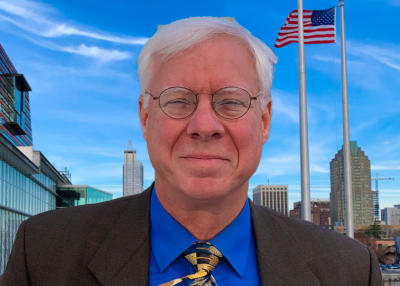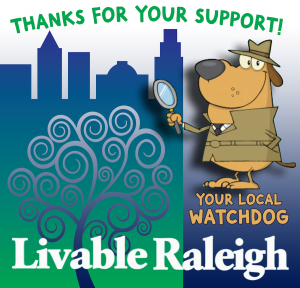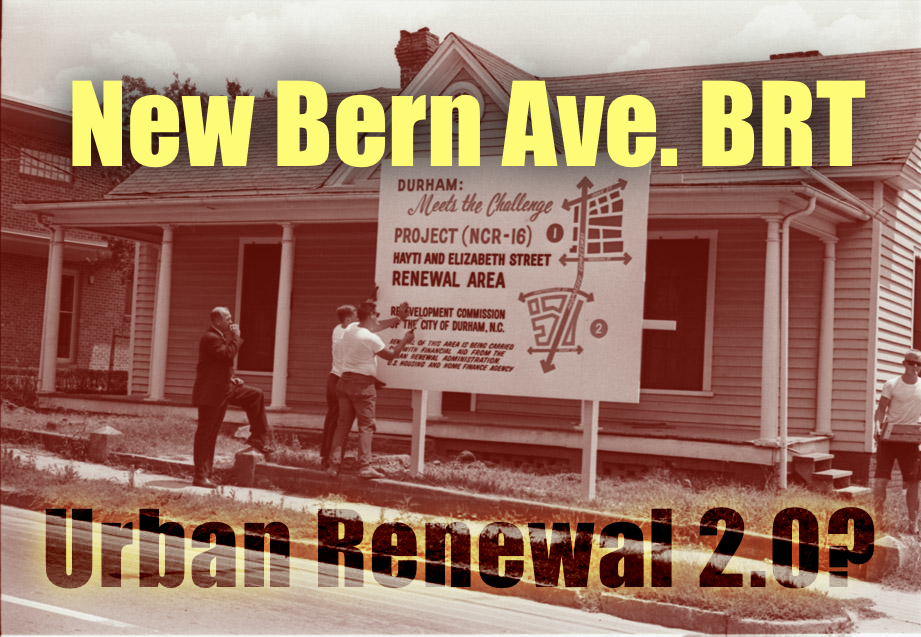
Russ Stephenson, LEED Accredited Urban Design Consultant and Architect (ret.), NC American Planning Association awards, Sierra Club Life Member, Raleigh Planning Commissioner, Raleigh City Councilor At-Large [voted for Wake Transit Plan], GoTriangle Board Member [led efforts to increase affordable units in Raleigh Union Station bus project & transfer BRT implementation from GoTriangle to City of Raleigh], Livable Raleigh Advisory Committee.
The pairing of these two record-setting New Bern Avenue initiatives: the $97M New Bern Avenue Bus Rapid Transit (BRT) line and staff’s proposed 744 parcel multi-story upzoning of private land along the New Bern Avenue Corridor, have presented the Planning Commission and City Council with some of the most complex and difficult growth decisions Raleigh will ever face.
Complex, in the challenge of understanding the mountain of regulatory provisions and their real world impacts – versus difficult. in terms of judging the overarching facts against the goals of the project and of our city.
Given the broad agreement about transit’s smart growth benefits, most deliberations so far have grappled with the complexities of reconciling the overlay zoning’s generalizations with unique parcel-by-parcel impacts. Meanwhile, difficult decisions about whether the overlay zoning achieves several fundamental goals of dismantling inequity, who will be served, and who will be forced out have largely been set aside.
Now is the time to step back from the many complexities that obscure those fundamental goals and consider five facts.
1. Transit has the potential to promote growth that is equitable or inequitable. Back in 2016, Raleigh’s leaders and transit advocates agreed that a primary goal of transit is to serve communities that need it most and to protect them from forced dislocation. At Smart Growth America’s 2016 Forum on Revitalization Without Dislocation, Planning Director Ken Bowers echoed those commitments: “The Wake County Transit Plan proposes to bring frequent bus rapid transit service to some of Raleigh’s lowest-wealth communities .. now is the time to ensure that these investments benefit rather than displace households and families.
2. The location of the New Bern BRT project, through the heart of Raleigh’s oldest Black neighborhoods, has the greatest potential for outcomes that are equitable or inequitable.
3. In keeping with our country’s growing resolve to acknowledge and redress our destructive and persistent legacy of racial biases and inequities, Raleigh’s adopted Equity Statement commits our city to dismantling Raleigh’s persistent race-biased systems and policies. While Planning Commissioner Nicole Bennett has questioned whether this commitment is being honored with the New Bern BRT project, the Commission has not yet sought authority from Council to pursue a project that revitalizes without dislocating.
4. The blanket upzoning of 744 private parcels will accelerate both redevelopment along the corridor and the removal of historically low-wealth and Black neighborhoods in the corridor. This outcome is in direct conflict with Raleigh’s stated equity goals, and is contrary to national best practices detailed in the American Planning Association (APA) Equity in Zoning Guide:(p.14) “The right way [to upzone] is the one that produces outcomes that undo past harms and avoids creating new harms to historically disadvantaged and vulnerable communities.” The proposed New Bern corridor upzoning fundamentally violates these national best practice outcomes.
5. The city’s 2020 community outreach efforts in support of the New Bern BRT project were in conflict to APA best practices for equitable community engagement (pp. 9-10) as documented here. By failing to engage local resident concerns, the process suppressed ingrained East Raleigh problems of racial inequity and dislocation. By failing to systemically seek and dismantle racial inequities in the New Bern Corridor, the current project – especially the blanket redevelopment overlay zoning – will only further institutionalize the unethical racial inequities that APA warns against. (APA Equity in Planning Guide pp. 4-5)
So, what are we planning for here? A BRT project that achieves our stated goals since 2016 of ethically and equitably serving communities that need transit most while protecting them from forced dislocation, or a project that maximizes economic development at the expense of those fundamental community goals and national best practices?
Will the New Bern BRT project be a failure if blanket upzonings are limited at first to areas outside the Beltline, where equity impacts are much less? The obvious answer is no. Redevelopment will be a little slower, but that will create the opportunity to prioritize revitalization without dislocation, according to APA professional and ethical best practices, as well as the opportunity to dismantle Raleigh’s ingrained systems of racial inequity where equity is needed most. This is the intentional choice for equitable transit described by Calvin Gladney, CEO of Smart Growth America.
In light of these facts, the difficult question for the Planning Commission and City Council is this: Rather than continuing to chip away at the overlay zoning’s many inequitable impacts, are you willing to call for an alternate staff proposal that puts less emphasis on rapid economic redevelopment and more emphasis on best practices that will achieve equitable revitalization without dislocation?
If you appreciate the kind of reporting we bring to you
|
Please donate $10 or $20, Thanks for supporting |
 |

